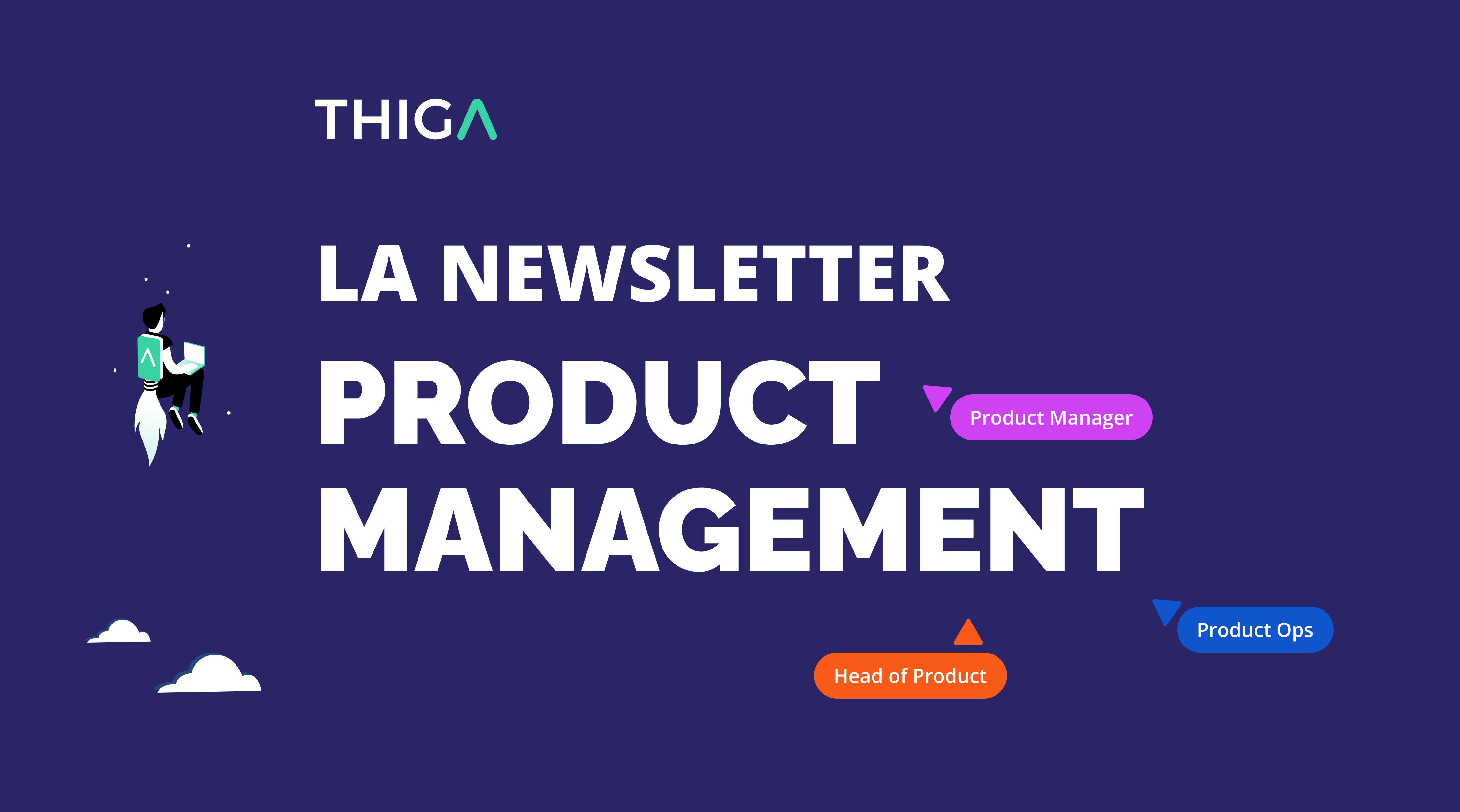Etam is betting on the full-stack model. By merging the roles of PM and PO, the ready-to-wear fashion group is taking a strategic turn to streamline its organization and empower its teams. A smooth yet profoundly transformative shift. The goal: increase efficiency, strengthen the Product culture… and get the entire group on board. In this article, discover the behind-the-scenes of this transformation.
At Etam, change is nothing to be afraid of. In recent years, the ready-to-wear group, present in around thirty countries, hasn’t hesitated to shake up its organization in pursuit of a more agile, more efficient structure — sometimes in rather abrupt ways. So when the group’s Lead PO decided to move on, Etam saw it as an opportunity: to turn the Product Owner role into a skill set, by transitioning to a full-stack PM model. But instead of opting for speed, the teams chose — for the first time — a gentler approach. The goal: to transform, sustainably.
A complicated handover
For several years, the structure of Etam’s Digital Factory — a cross-functional unit serving several of the group’s brands (Etam, Undiz, Maison 123, and Livy) within an IT department — followed a fairly classic setup. It oversaw all digital B2C and B2B products: e-commerce sites, mobile apps, business tools, etc. On one side were the Product Managers, in charge of strategy — building the roadmap, conducting discovery, meeting users, and validating hypotheses. On the other, Product Owners, who would then take over delivery — scoping out solutions, following up with developers, and making sure tickets were understood. At the end, the PM would return to verify that what was developed aligned with the original vision. A theoretically clear setup.
The issue, however, is that this handover was not always smooth. Not having been involved upstream, the Product Owner didn’t always have the necessary context or the same analysis as the PM. And their room to maneuver was limited. The result: things got lost between discovery and delivery, and the user journey could end up fragmented. “When there’s a technical constraint, the PO makes decisions alone. When the PM gets back into the loop, they realize the finished product doesn’t quite match what they envisioned. And at that point, it’s too late, explains Clarisse Delubac, who held the Lead PM role in this two-headed setup. On the other side, the PO joins the project late and ends up defending a solution they didn’t co-construct.” A dilution of responsibility on both sides, which leads to misunderstandings, then disagreements — even tensions.
The departure of Etam’s Lead PO was a wake-up call. Why not break that chain? Why not give one person end-to-end responsibility? The teams were quickly consulted. “We knew it was a big change, but we also knew some PMs had delivery experience and some POs were interested in strategy and discovery, notes Clarisse Delubac. So we decided to formalize this transition by evolving PMs and POs into full-stack PMs.” An ambitious project — and a complex one. “We had to shift our mindsets. Coming from a delivery-heavy role marked by technical constraints, there’s a tendency to see everything through the lens of feasibility. We had to refocus on the user, dare to experiment. That mindset shift was probably the hardest part. To make it work, we had to support it.” To do so, Etam brought in a consulting firm: Thiga.
Discover in this article how e-commerce players are harnessing AI to stand out from the competition.
A gentle transition
Sarah Djellouli is a Product organization expert at Thiga. She was the one dispatched to Etam to support the transition. She had two objectives: reconnect product work to the expected business value, and address the teams’ desire for broader scopes and more interesting responsibilities — to boost engagement, retention... in a word, impact.
At Etam, a smooth transition was far from expected. “We’re not known for doing things halfway, confides William Magalhaes, Lead CX at the group. Historically, changes have been quite firm, sometimes a bit abrupt. But this time, we wanted to do things differently.” That’s the logic behind bringing in Thiga — a deliberate choice to successfully change the organization without disrupting team dynamics.
The first step was to clearly define what “full-stack PM” actually meant. What does the ideal job description look like? Once that was established, they needed to assess where the teams currently stood. PMs and POs were asked to self-assess against a skills matrix, so they could position themselves relative to the goal. “From there, we were able to build a tailored training plan” reports Sarah Djellouli. The good news: all the skills needed to become full-stack PMs already existed internally! “The PMs trained the POs on strategy and discovery. And vice versa, the POs trained the PMs on their areas of expertise — scoping, delivery, and operational management.”
A PM who designs and delivers their topic is a PM who feels responsible
After the training came hands-on practice: Etam set up a cross-coaching system between PMs and POs over three sprints. Each duo worked on a concrete topic, immersed in the other’s day-to-day. The PM handled the strategic phase — roadmap and discovery — while the PO managed the operational side — delivery, scoping, coordination with developers, and sprint management. This setup began to shift things. “It helped get the POs out of their feasibility reflex, recalls the consultant. They were faced with situations where they had to think in terms of value, ask the right questions up front, even before knowing if it was feasible.” On the flip side, some PMs discovered that “following a user story through to production and handling surprises is a real job in itself.” The exchanges were candid, sometimes unsettling, but rich. “There was a lot of humility within the pairs, adds Sarah Djellouli. And that brought out very different affinities, which helped us anticipate potential friction.”
At the end of this phase, the organization officially transitioned to full-stack. The POs became full-fledged PMs, responsible end-to-end — from discovery to production. No leap into the void: strong support remained, with regular check-ins to secure the transition. “We didn’t want to rush people. Some needed time, others needed clarification on their new scope. And that’s totally OK.” The key message was clear: not standardization, but clarification of roles. “Being full-stack doesn’t mean being an expert in everything, but being able to own the entire chain without interruption,” the product transformation expert reminds us. Each PM retains their strengths, their sensibilities — but now takes on the full scope. And that changes everything.
A rethought organization
Six months later, Etam now functions in two main teams: a Product team made up of full-stack PMs, led by Clarisse Delubac, and a Customer Experience team, including Product Designers, data specialists, and Conversion Rate Optimizers (CROs). William Magalhaes leads this second team. He was a close witness to this shift in operations. Whereas in the old model, the Product Manager was central to discovery, the switch to full-stack reshuffled the deck.
“Now, PMs are also involved in delivery and no longer fully dedicated to the strategic side. As a result, discovery is more shared among different roles, he explains. This redistribution has two major effects. First, it pushes Designers to take on more responsibility. Designers now do more research than before — either on very specific topics related to production quality or on broader exploratory work.” The goal: to stay focused on the user, even when PMs are tied up with production. Second, this shift also benefits more transversal profiles. “It creates space for roles like CROs, who can take on Product Analysis or research topics.”
Fewer silos, more impact
The move to the full-stack model deeply streamlined the organization. “The first benefit is efficiency, highlights Clarisse Delubac. There are fewer back-and-forths, less friction. The PM follows their topic from A to Z, so they have all the keys, all the context.” This simplification enables quicker decision-making, better risk anticipation… and less time wasted reconnecting the dots.
Beyond processes, individual engagement has also evolved. The Lead PM says it plainly: “A PM who designs and delivers their topic is a PM who feels responsible. They own their product. They get involved. They follow through.” The new setup also addresses a shortcoming of the old model: context breaks between discovery and delivery. William Magalhaes explains: “Before, between research and production, three to four months could pass for small topics, and six months to a year for larger ones. The site, the market, the priorities — everything had changed.” Now, “since the PM is involved in both phases, they maintain consistency in interpreting user needs.” The result: less distortion between the initial intention and the final product.
This shift to a Full-stack model Is more than an organizational decision — it’s a real sign of product maturity
Finally, the full-stack model acts as a potential unlocker. “There’s also a benefit for former POs, who’ve gained a broader vision, notes Clarisse Delubac. Before, they were stuck in tickets. Now, they look up, understand the stakes, see the user impact.” A beneficial posture shift that restores meaning and opens new horizons. William Magalhaes also highlights another side effect: a healthier platform, with fewer bugs. “By strengthening delivery, we manage emergencies better. It’s a conscious choice: effective discovery starts with a stable product.”
Small team, big ambitions
For Sarah Djellouli, this organizational shift reflects a deeper evolution: “This move to a full-stack model isn’t just an organizational decision. It’s a real sign of Product maturity.” The company is moving from fragmented responsibilities to a more integrated, clearer, and more empowering structure. A path that reflects a growing Product culture: “The organization shows it trusts its teams, is ready to invest in their development, and support their skill-building.”
Today, Etam’s Digital Factory includes 40 people, within an IT department of 100 employees, in a group of 900 staff. The full-stack model enables smoother delivery, but also better integration across business, marketing, and design. “We’re a small product team in a big group, but we’re moving fast,” smiles Clarisse Delubac.
For her and for William Magalhaes, the goal is now clear: to spread this culture beyond the Digital Factory. The full-stack model isn’t the end — it’s the foundation. What the teams aim for today? A more fluid organization, insight-driven decisions — and a shared Product culture across the entire group. Leading by example.
Want to develop your skills or your team’s? Enroll in Thiga Academy’s Full-Stack PM training!


.png)
-1.png)
